The Raven (1935)
Directed by: Lew Landers
Written by: Clarence Marks, David Boehm, Dore Schary, Florence Enright, Guy Endore, Jim Tully, Michael L. Simmons
Starring: Bela Lugosi, Boris Karloff, Irene Ware, Lester Matthews
USA
AVAILABLE ON BLU-RAY: 2OTH JULY, in the THREE EDGAR ALLAN POE ADAPTATIONS STARRING BELA LUGOSI Boxset from EUREKA ENTERTAINMENT
RUNNING TIME: 61 mins
REVIEWED BY: Dr Lenera
Professional dancer Jean Thatcher accidentally wraps her car round a road sign and is seriously injured. Her father Judge Thatcher and her fiancée Jerry Halden implore retired surgeon Richard Vollin to perform an operation to restore her to health. Vollin, who’s obsessed about Edgar Allan Poe, agrees and achieves this, but becomes besotted with Jean. A murderer on the run, Edmund Bateman, then comes to Vollin’s home asking for a new face so he may live in anonymity. Vollin can alter appearances by altering the nerve ends, and operates on Bateman’s face. However, Bateman awakes to find his face very disfigured, and Vollin only saying that he’ll make him look better if he does his bidding….
The third and last of Universal’s Edgar Allan Poe-inspired films is the middle movie in quality. In some ways it’s rather similar to the The Black Cat, with lovers held captive in a house full of strange amenities by a mad man who’s infatuated with the heroine, but tones down the strangeness and extreme content. Make no mistake though, it’s quite a strong movie in its own right. While it does suffer a little from not having many scenes that one might consider to be horror, a good case can be made for it as the most sheerly enjoyable of the three movies, and it’s certainly the closest to Poe. No, it’s not a cinematic expansion of Poe’s brilliant poem of the same title, but it’s full of themes and ideas from Poe, and actually comes across partially as a kind of tribute to the writer. For those not versed in the work of the great man, it’s still a very entertaining and quite lurid early dabbling in timeless horror themes such as madness, disfigurement and obsession, as well as being perhaps an early torture movie, elements of which you can see in the Saw films and their like, though curiously there are few deaths. It also has possibly the best ever performance by Bela Lugosi, one which to me is even better than his Dracula. I feel that he’s often overlooked, dismissed or even mocked in favour of Boris Karloff, who was certainly a subtler actor. But Lugosi, as well as possessing a unique screen presence, should certainly deliver the goods when he felt like it, and never more so than here.
Universal understandably wanted to repeat the box office success of The Black Cat but not the trouble beforehand. Therefore, instead of an auteur like Edgar G.Ulmer, they hired journeyman director Lew Landers [who went on to become mostly known for making cliffhanger serials] to direct. Novelist Guy Endore wrote a treatment that mixed elements of Poe’s The Gold-Bug, then Michael Simmons and Clarence Marks collaborated on a script, then John Lynch and Dore Schary, before David Boem turned in three screenplays and his last one was used. However, the Production Code had really had enough of horror films by now and only let the production go ahead if some scenes were toned down, and after a look at Boris Karloff’s makeup to ensure it wasn’t too horrific. Karloff was billed again as KARLOFF, and Lugosi now called LUGOSI, with his salary slightly raised to be half of Karloff’s, though Karloff was still top billed despite being in the film far less. During shooting, Universal decided to exploit the Poe connection more than anything else and wanted more and more of Poe in the film, with several writers adding bits and pieces. As they went further and further down this path, they ended up shooting themselves in the foot when they even recommended that teachers take school children to the movie. While The Raven had no trouble getting through the censors unscathed, it kicked off a series of arguments about the suitability of horror films for even adult audiences which overshadowed its reasonable commercial success. It was banned in Holland, China and some Canadian territories, while in the UK, it was debated in Parliament, resulting in the BBFC saying that it would be the last horror that they would pass for some time.
Great economy of storytelling gets us into things right away, with the sight of Jean’s car accident dissolving into a red cross, an ambulance racing down a street, and a nice pan from four people surrounding Jean in a hospital into Jean’s face. Lugosi’s entrance is wonderful; us looking at the shadow on a wall of a raven statue while Vollin recites the poem, before we pull back to reveal him sitting opposite someone who wants to buy his Poe collection, a collection that includes two torture chambers, something which slightly perturbs the man. Well, Vollin does say to him that ‘it’s more than a hobby”. Vollin falling for Jean is emphasised by quite a few close ups of his eyes, and it’s a bit like the same year’s Mad Love, except that she seems to fall for him briefly because he’s saved her life, a not entirely uncommon situation. When he goes to put his arm round her, she recoils, but is still infatuated in a weird way, and works some of this out by, clad in a bizarre getup that includes a mask, cloak and a golden cap, performing a dance called ‘The Essence Of Poe’ on stage which gets more and more frenzied while someone recites Lenore. This rather strange scene is sadly the climax of this part of the basically three-act film, and I almost wish the movie had carried on with this psychologically very interesting plotline. However, this is of course a horror, so the heroine must soon begin to fear the villain, and we must meet Karloff’s character Bateman, who’s escaped from San Quentin prison and has killed. It’s wonderful to see Karloff and Lugosi engage in possibly the longest dialogue scene they ever had together, but it’s hard not to laugh when Vollin talks of nerve glands at the back of the neck which, if moved around, can alter a person’s appearance – and how he can do this in ten minutes!
Still, this is followed by a tremendous scene of horror that still packs a punch today. Bateman has supposedly had the operation and his face is covered in bandages, but through them you can see one eye, but only one eye, positively glistening with anticipation. Vollin unwraps the bandages, revealing that one side of Bateman’s face looks fine while one is very disfigured. The makeup is criticised on the first of the film’s two audio commentaries, but I think it’s terrifically grotesque. Vollin disappears, Bateman stands up and lumbers into the next room which [for some reason] happens to be full of huge mirrors, then looks in each one, seeing his hideous features looming out at him each time, while Vollin can be heard laughing horribly. For sheer intensity, this scene is hard to beat in films from the time [and is that Karloff’s growl from Frankenstein we briefly hear?], and the rest of The Raven doesn’t quite measure up, though it’s never dull, and with its swift pacing should entertain and surprise even some of those modern viewers who sadly consider films of this vintage to be boring. Vollin tells Bateman that he’ll make him look fine if he does his bidding, though does anyone watching believe him? Then a group of people – most of whom we’ve already met – become guests and then trapped in Vollin’s abode which includes such features as rooms that move, a door that opens on to a long drop, and a Pit And The Pendulum-inspired torture room. It’s quite exciting, if perhaps closer to a chapter serial despite the inclusion of the hackneyed horror movie plot element involving the villain and henchman previously used in Murders Of The Rue Morgue, as all the guests become in great mortal jeopardy except for one old couple who sleep through the whole thing.
This one really is Lugosi’s film. There is so much emotion in his performance, really making Vollin into a human being. His reciting of the poem is done with such feeling, his thick Hungarian accent strangely suited, that I almost stopped thinking of Vincent Price for a few seconds. Later on, when he speaks supposedly of Poe but really of himself, talking of the madness coming from lost love that can grip a genius and can drive him to torture, he delivers the speech brilliantly, full of pathos but getting increasingly frightening with it – and enough for one to forgive the fact that he wrongly claims that when Poe wrote ‘Lenore’ he was mourning a love named Lenore who’d left him, when in fact he was expressing his concern over his wife Virginia’s illness – is this a mistake in the script or intended to show how mad Vollin is, a Poe obsessive who can’t even get his facts right? Of course he’s scary in the scenes where he clearly intimates that he gets an almost sexual kick out of torture, and his laugh is horrifying. Like The Black Cat, this was another film that I always missed as a youngster when it was on TV, and only saw it for the first time a decade or so ago. I was struck by how great Lugosi’s performance was, and it’s such a shame that he had to act in any old rubbish as his career declined. Of course Karloff – who I don’t want to ignore – is excellent too, again deriving much expression from his eyes, or rather one eye. We sympathise when he says how he’s constantly called ugly, but when he casually remarks, “you can’t help doing things like that” when talking about killing someone with a blowtorch, he instantly scares us. However, once he becomes disfigured, he gets increasingly sympathetic, and actually goes against the common horror principle that “an ugly man does ugly things” .
Despite this one having had so long spent on the script and there not having been extensive re-editing, there are still some plot gaffes, such as the way Vollin says Bateman’s name in public. And what was the point of inviting all those people to Vollin Manor? The rest of the cast just fare okay, including Irene Ahlberg who is adequate as Jean. For some reason Jerry Halden’s character is mispelled Jerry Holden in the credits, though he’s so bland that he barely registers. The screen billing also switches the character names played by Spencer Charters and Ian Wolfe – Charters actually portrays Colonel Bertram Grant, while Wolfe appears as Geoffrey “Pinky” Burns. The credits were obviously rushed. Gilbert Karland is credited as ‘music director’, but most of what we here is The Black Cat‘s music reused, including a couple of its classical music quotes. Lew Landers generally directs efficiently, even smoothly, but doesn’t put much of a personal stamp on the movie, though if there’s one thing the The Raven is notably lacking compared to the first two films, it’s their wonderfully expressionistic cinematography and set design which supplied so much atmosphere. But it still remains old-style Gothic horror of the most thoroughly entertaining kind, as well a being a Poe-related film that deserves to be placed up there with those wonderful Roger Corman/Vincent Price pictures. In fact, it’s virtually meta.
Rating: 









The Raven is blander in look than it’s two forebearers, but on Blu-ray it might have the best picture quality of the three, the HD restoration not having as much to contend with. The picture clarity is considerably better than you’d expect from a film made twenty years later, with even the details of the suits being highly visible. There’s very little black crush and only some very minor examples of print damage. Coupled with the very good audio, this could be virtually reference material for a release of a film of this vintage.
This time Eureka go one better than Scream Factory and offer up not one but two audio commentaries for your listening pleasure. First of all is Gary D. Rhodes from the Scream Factory release who begins his track by saying that it’s virtually a sequel to the two talk tracks by Gregory Henry Mank. His track isn’t quite as good though, even if one accepts that, as he says, there’s little information on the making of this one. But we do learn things like Kurt Neumann was originally intended to be the director, how the film was actually very topical including mirroring a concern that gangsters were actually using plastic surgery to prevent capture, and how the film was critically received in detail. Horror was often looked down upon by snobby critics and that didn’t change majorly until comparatively recently. Rarely scene specific, it’s still a solid track. The new commentary from Eureka featuring Samm Deighan is far superior at first, though goes a bit downhill and falls into the trap of going through filmographies to take up space, though it was interesting to get a full picture of Lugosi [well described by her as a “charismatic force of nature”]’s career, as well as more detail on earlier Poe adaptations and relating to similar films. A shame that she calls Son Of Dracula “silly” and “campy”. Boo! Neither track is up to the ones done by Mank, but then I didn’t expect that.
Replacing the second part of a featurette about Karloff and Lugosi [about whom we hear loads about anyway] on the Scream Factory, the always worthwhile Kat Ellinger [who partners Deighan on the ‘Daughters of Darkness’ podcast] gives us a good chat about the difference between British and American Gothic, what Poe did with the form and its ideas, and where The Black Cat and The Raven fit in, though oddly Murders In The Rue Morgue isn’t mentioned at all, leaving a curious gap. Much like on the commentaries, she says how Poe is so hard to adapt for the screen; his stories are varying degrees of shortness. And finally, replacing the Lugosi reciting of ‘The Tell-Tail Heart’ which Eureka transferred to Murders In The Rue Morgue disc, we have a 1941 radio adaptation of the same story with no less than Karloff narrating the story as its anti-hero. The tale has been expanded a bit, but not to its detriment, while Karloff is typically restrained and of course highly effective because of this. This was originally on the Black Friday disc of the Scream Factory set.
The Three Edgar Allan Poe Adaptations starring Bela Lugosi Boxset is nothing less than a treat for Region ‘B’ – enabled lovers of old school horror. While I still personally find Murders Of The Rue Morgue rather flawed, I did appreciate it a bit more this time around, and some of the special features in this set meant that this lover of Poe and also this era of horror was pretty much in heaven. Highly Recommended.
BOXSET SPECIAL FEATURES
*Limited Edition Set [2000 copies]
*O-Card Slipcase
*48-PAGE collector’s booklet featuring new writing by film critic and writer Jon Towlson; a new essay by film critic and writer Alexandra Heller-Nicholas; and rare archival imagery and ephemera
*High Definition Blu-ray (1080p) presentations for all three films, with The Raven presented from a 2K scan of the original film elements
*Uncompressed LPCM monaural audio tracks
*Optional English SDH subtitles]
THE RAVEN
*The Raven – Audio commentary by Gary D. Rhodes
*The Raven – Audio commentary by Samm Deighan
*American Gothic – a video essay by critic Kat Ellinger [15 mins]
*“The Tell-Tale Heart” episode of radio series Inner Sanctum Mysteries, starring Boris Karloff [26 mins]

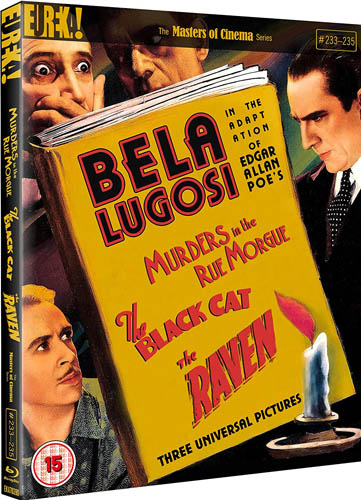
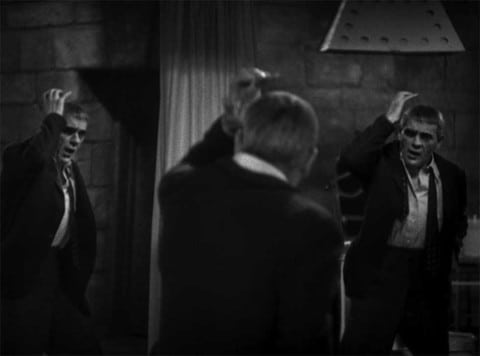
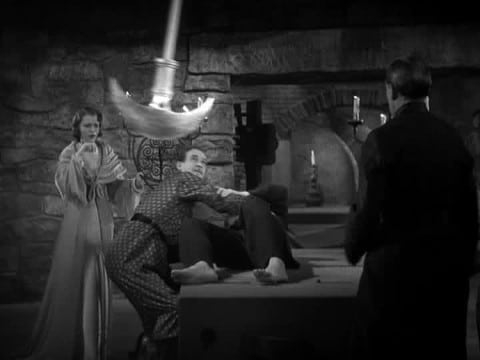


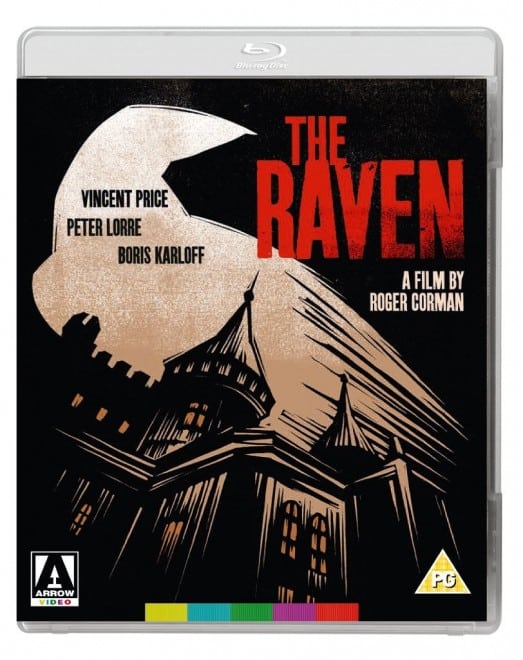
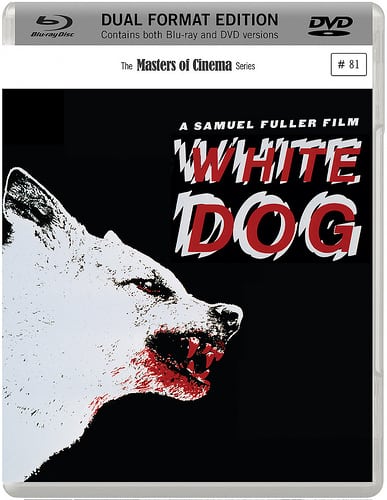
Be the first to comment